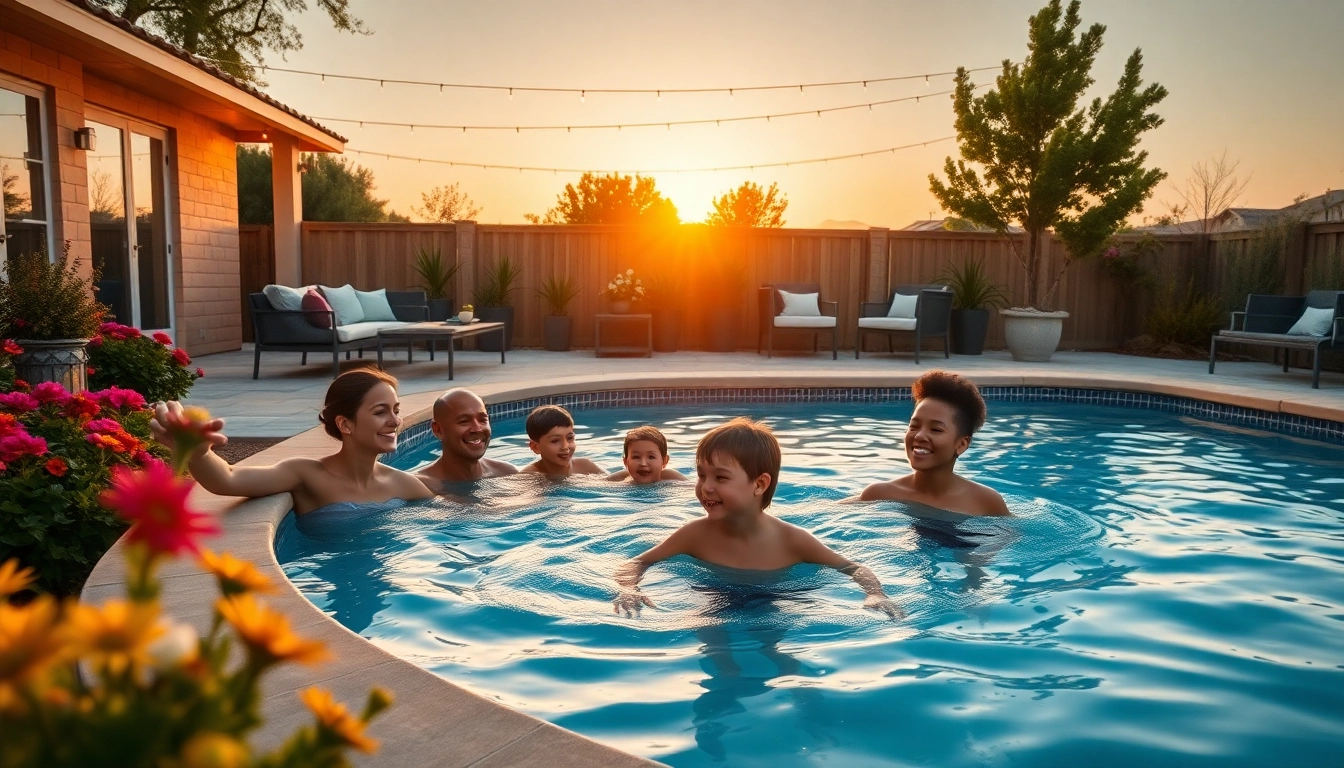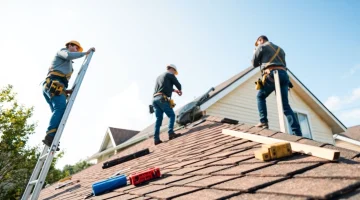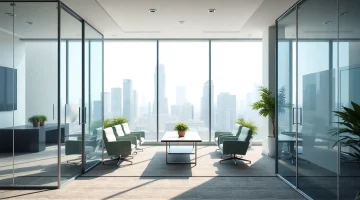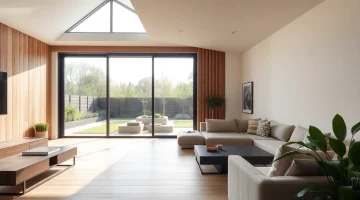
How to Build Your Own Pool: A Comprehensive Guide for Custom Backyard Designs
Understanding the Basics of Building Your Own Pool
Building a pool in your backyard can enhance both the value of your home and your family’s outdoor enjoyment. If you’re ready to jump in, you’ll need to navigate through several important stages of the process. Whether you envision a sleek modern design or a more traditional oasis, understanding the basics will help lay the ground for a successful project. This guide aims to make the journey easier by helping you build your own pool effectively while managing costs and ensuring a beautiful, functional space.
Choosing the Right Pool Type for Your Needs
The first step in constructing your pool is determining the type that best suits your lifestyle, preferences, and space. The most common types of pools include:
- In-ground Pools: Typically made from concrete, fiberglass, or vinyl, these pools offer a permanent solution tailored to your design vision.
- Above-ground Pools: More affordable and easier to install, these are useful for temporary or seasonal use, though they come with less aesthetic integration.
- Infinity Pools: Aesthetic marvels that offer a stunning visual effect by blending seamlessly with the horizon, these pools require careful planning and installation.
- Lap Pools: Perfect for those who swim for exercise, these narrow and long pools prioritize functionality while also providing a chic look.
Evaluate your space and budget to identify which type aligns with your needs. Consider factors such as maintenance, usability, and design integration into your existing landscape.
Essential Planning and Permitting Steps
Once you’ve selected the pool type, planning becomes crucial. Before breaking ground, you’ll need to:
- Check Local Regulations: Different cities and states have specific regulations regarding pool installations, which may include permits, zoning requirements, and property setbacks.
- Consult Professionals: Engage pool contractors and landscape architects early on, as their expertise will guide you through necessary regulations and help in drafting a blueprint.
- Create a Timeline: A detailed schedule helps manage the construction phases, ensuring a smooth process from excavation to finishing touches.
Proper planning minimizes disruptions and helps you stay on track with your budget and timeline.
Budgeting for Your Dream Pool Project
Cost estimation is an indispensable part of the pool-building journey. The total cost of a pool can vary widely based on materials, features, and labor. Consider these essential components:
- Installation Costs: This includes excavation, construction, and installation of the pool structure and systems.
- Pool Equipment: Filtration systems, pumps, heaters, and lighting are important components that will add to your initial and long-term costs.
- Landscaping and Decking: Enhancing your pool area with beautiful landscaping and durable decking will create an inviting atmosphere.
- Maintenance Costs: Factor in ongoing expenses, such as chemicals, cleaning, and repairs.
Creating a detailed budget will help anticipate financial demands and avoid surprise expenses during the construction process.
Designing Your Ideal Pool Environment
Once you have established your budget and have a clear plan in place, it’s time to focus on the design of your pool environment. This is where you can customize the aesthetics while ensuring functionality.
Incorporating Landscaping and Hardscaping
For a cohesive outdoor space, integrating landscaping and hardscaping around your pool is vital. Elements to consider include:
- Plants: Select native plants that complement the design and are suited to your climate, ensuring easy maintenance and sustainability.
- Patios and Walkways: Choose materials like pavers, stone, or concrete for durable surfaces that enhance your pool’s aesthetics and allow for safe movement.
- Outdoor Features: Consider adding features such as waterfalls, fountains, or fire pits to create an inviting ambiance and improve the overall experience.
Landscaping and hardscaping should also reflect your personal style and harmonize with the surrounding environment for a natural look.
Selecting Pool Features and Additions
Once the main structure is in place, think about additional features that can elevate your pool experience further:
- Lighting: LED lights, both underwater and around the pool area, not only enhance visual appeal but also contribute to safety during nighttime swimming.
- Heating Systems: Consider integrating a heating option for year-round use; gas, electric, and solar heaters are popular choices.
- Water Features: Waterslides, fountains, or spa jets can add fun and aesthetic value while providing a unique character to your pool.
- Automation Systems: Smart technology can make managing pool operations convenient, including cleaning schedules, temperature control, and lighting settings.
Selecting the right features depends on your lifestyle, budget, and how you plan to use your pool.
Creating a Cohesive Outdoor Space
A successful pool area is an extension of your home. A well-designed outdoor space should incorporate elements of comfort and relaxation:
- Outdoor Furniture: Invest in quality loungers, chairs, and tables that can withstand the elements while providing comfort for everyone.
- Shade Structures: Installing umbrellas, pergolas, or canopies will ensure protection from the sun and create a cozy retreat.
- Fire Pit Areas: A fire pit can serve as a gathering spot, creating an inviting ambiance for evening swims or relaxing nights under the stars.
By integrating these elements into your pool area, you create a harmonious environment that enhances outdoor enjoyment.
Construction Steps for Your Custom Pool
With your design ready and plans finalized, the construction phase begins. Understanding the primary steps in this process will help ensure that everything goes according to schedule.
Site Preparation and Excavation
Site preparation is vital to successful pool construction. This phase includes:
- Clearing the Area: Remove any debris, plants, or structures that could interfere with the construction.
- Excavation: The site is dug, often involving machinery, to create the correct shape and depth for your pool.
- Compacting Soil: Ensuring that the soil is stable will prevent future shifting and settling of the pool.
Proper excavation sets a solid foundation for the installation of the pool structure.
Building the Structure: Materials and Techniques
Depending on the type of pool you’re building, various materials and construction methods will be involved:
- Concrete Pools: Require steel rebar skeletons that are sprayed with gunite, followed by a plaster finish.
- Fiberglass Pools: Prefabricated structures that are dropped into the excavated space, offering faster installation.
- Vinyl Pools: Customized liners fitted into a steel or polymer frame, providing a variety of design options.
Each option has its pros and cons in terms of durability, cost, and maintenance; selecting the right one for your needs is crucial.
Installing Pool Systems: Filtration and Lighting
Efficient pool operation requires various system installations. Key components include:
- Filtration System: These systems will maintain clean water by removing debris and contaminants, consisting of filters, pumps, and skimmers.
- Electrical Systems: Includes planning for pool lights and any automated systems you’d like to integrate into your pool.
- Water Heaters: Connect these to provide a comfortable swimming environment regardless of the outdoor temperature.
Proper installations are crucial for efficient pool functioning and user satisfaction.
Safety Measures When Building Your Own Pool
Safety cannot be overlooked in pool construction. Ensuring a secure environment is paramount, especially if children or pets will be around.
Installing Fencing and Safety Covers
One of the first safety measures to consider is enclosing your pool area:
- Fencing: Install a barrier at least four feet high with self-latching gates to prevent unauthorized access.
- Safety Covers: During the off-season, covers can protect the pool and prevent accidental falls.
These features are vital in keeping your pool safe and compliant with regulations.
Understanding Local Safety Regulations
Each jurisdiction has different regulations concerning pool safety:
- Local Codes: Familiarize yourself with your area’s building codes to meet all requirements upon approval.
- Inspections: Ensure that licensed professionals conduct necessary inspections during construction and before your pool opens.
Building according to regulations not only protects users but potentially saves you from hefty fines or legal complications.
Maintaining a Safe Environment for Everyone
Regular maintenance and safety checks help maintain a safe swimming environment:
- Supervision: Always supervise children and inexperienced swimmers around the pool area.
- Emergency Equipment: Keep lifesaving devices, like flotation aids and life rings, easily accessible.
- Education: Teach family members about pool safety, which can include swimming lessons and water safety courses.
A proactive approach to safety creates a fun and secure atmosphere for enjoying your new pool.
Maintenance and Care for Your New Pool
With your dream pool completed, maintaining it becomes essential for longevity and user enjoyment. Routine maintenance helps you avoid costly repairs and ensures clean, inviting water.
Routine Cleaning and Chemical Balancing
Your pool’s water quality requires regular attention:
- Skimming and Vacuuming: Regularly remove debris on the surface and maintain the pool’s floor condition.
- Chemical Testing: Test water chemistry weekly to maintain appropriate pH, chlorine, and alkalinity levels for safe swimming.
- Filter Cleaning: Keep the filtration system functioning optimally by cleaning or replacing filters as needed.
Consistency in these tasks ensures an enjoyable swimming experience while safeguarding health.
Seasonal Preparation and Closing Procedures
Proper care throughout the seasons protects your pool:
- Winterization: If you live in a colder climate, properly winterize your pool to prevent damage from freezing temperatures.
- Spring Opening: Before opening your pool for the summer, execute a thorough cleaning and equipment check.
Each seasonal transition requires specific steps to ensure your pool remains in top condition year-round.
Long-term Maintenance Tips for Longevity
To ensure a long lifespan for your new pool, it’s wise to follow best practices:
- Routine Inspections: Schedule professional pool inspections to address concerns before they escalate into larger issues.
- Equipment Upgrades: Stay updated with the latest technology and consider energy-efficient solutions for filtration and heating.
- Regularly Update Safety Measures: As the pool ages, review and update safety features to align with current standards.
A commitment to maintenance will enhance both the functionality and enjoyment of your pool for years to come.



